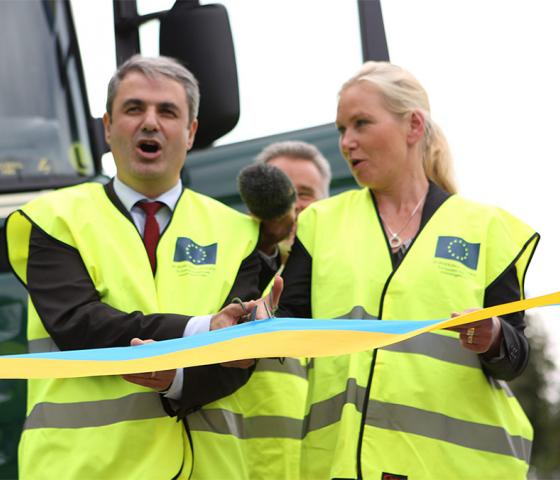
Towards emission free transport
Sweden’s transportation sector aims to become fossil free by the year 2045, and there is currently a whirlwind of activities going on to achieve this vision. Electrified highways for transport trucks is one of the innovative concepts that has great potential. In 2016 the first electrified road was piloted in Gävle, Sweden, where a two-kilometre strip of the E16 motorway was electrified.
The technology is based on equipping a hybrid truck with a power collecting apparatus called a pantograph, similar to electric trains. Via the contact rails of the pantograph which is mounted on the truck, they are connected to the overhead power lines of the road. AFRY is developing a cooling module to apply to the converter which regulates the electric power used for the trucks and to charge batteries. Scania is the first in the world to produce hybrid trucks using electricity from power lines on public roads.
”With this solution, a large proportion of heavy freight transport on the major highways can drive emission-free. A recent study in Germany has shown that electric freight transport is the most effective way to address emissions”, describes Christer Thorén, Project Manager, Electric and Hybrid Technology at Scania.

Electric hybrids have many environmental benefits
Compared to a regular combustion engine, an electric hybrid has nearly double the energy efficiency. In addition to this, the electricity can be sourced from renewable energy alternatives. Due to the level of noise generated from a truck’s combustion engine, a hybrid truck would also have a lower noise level and the driving experience would be more pleasant.
The advantage of an electric hybrid is flexibility. The truck can drive on green electricity on an electrified road just like a train. At the same time, the truck can charge its batteries and continue to use green electricity on a non-electrified road. Estimates show that by electrifying three percent of Sweden’s most trafficked roads used for freight transport, a fuel saving of 25 percent would be possible.
”To have the greatest impact, we should electrify the roads with the highest traffic density. Sandviken located outside of the city of Gävle is an example of where hundreds of trucks drive the same route everyday. If electrified roads becomes a reality, the next step would be to connect these traffic clusters with each other”, continues Christer.
Aiming for a fossil free transport sector
Electrified roads may well be a part of the future traffic system. There is a strong political will to transform the transport sector and interest to explore solutions such as Scania’s hybrid truck. Research about fossil free transport is prioritised, environmental zones have already been established in several places and it looks like there will be a ban on diesel fuel within the EU.
”A few years ago, changes that we thought were incredible are now becoming a reality. To have a fossil free transport sector is an ambitious goal that require an effort and we have seen an increasing interest in our services in this area”, says Thomas Sederholm who is part of the project at AFRY.

